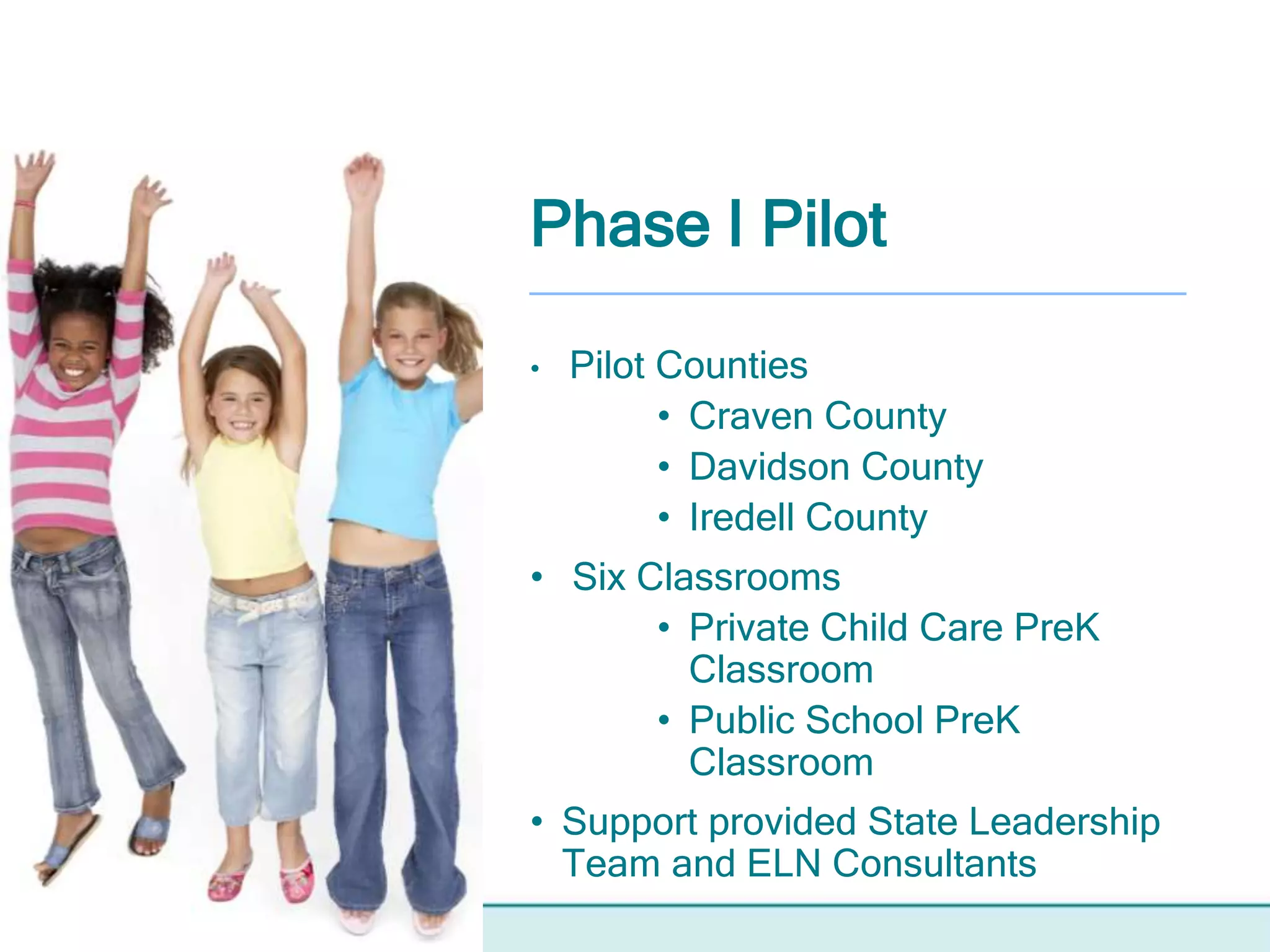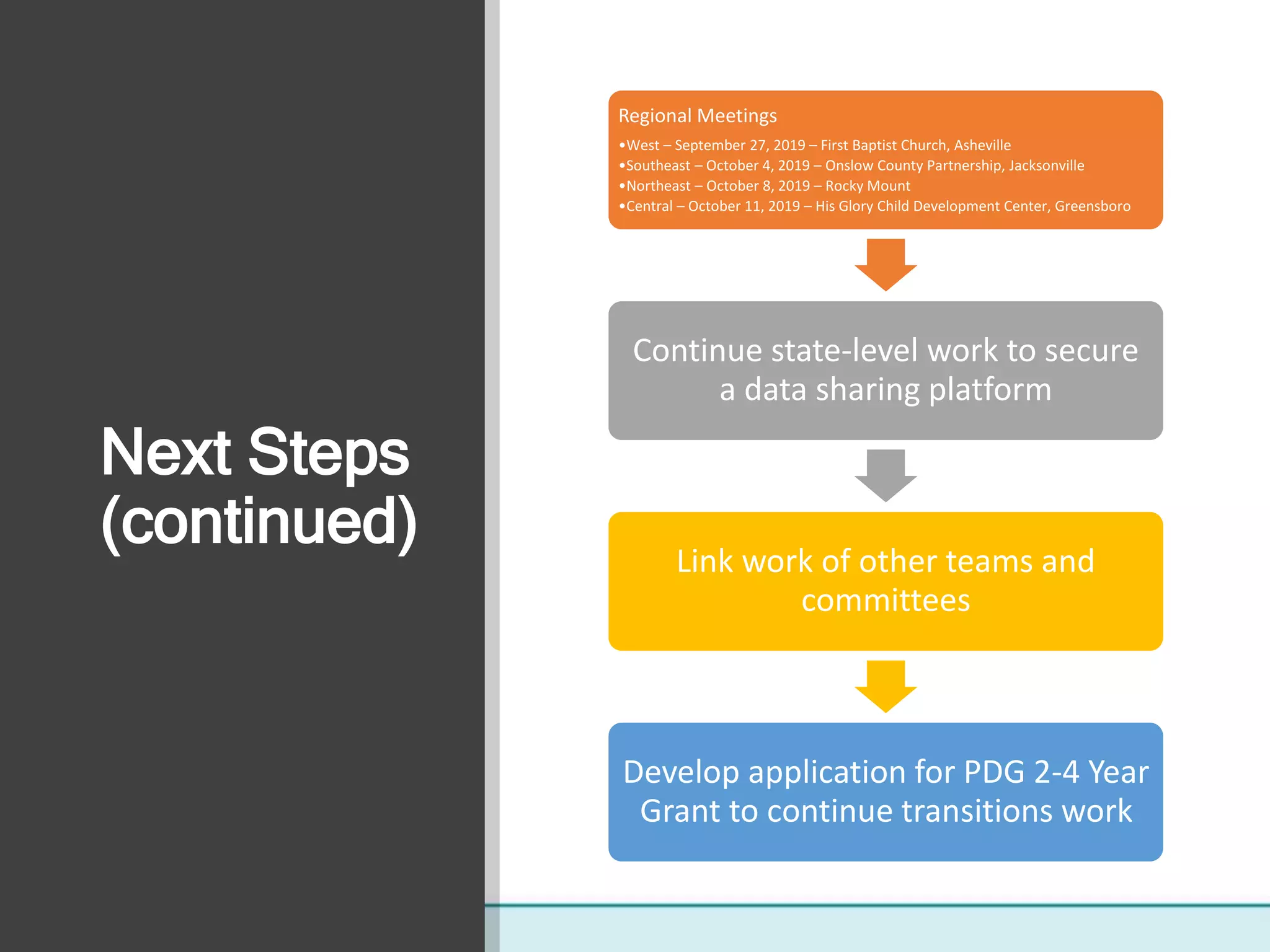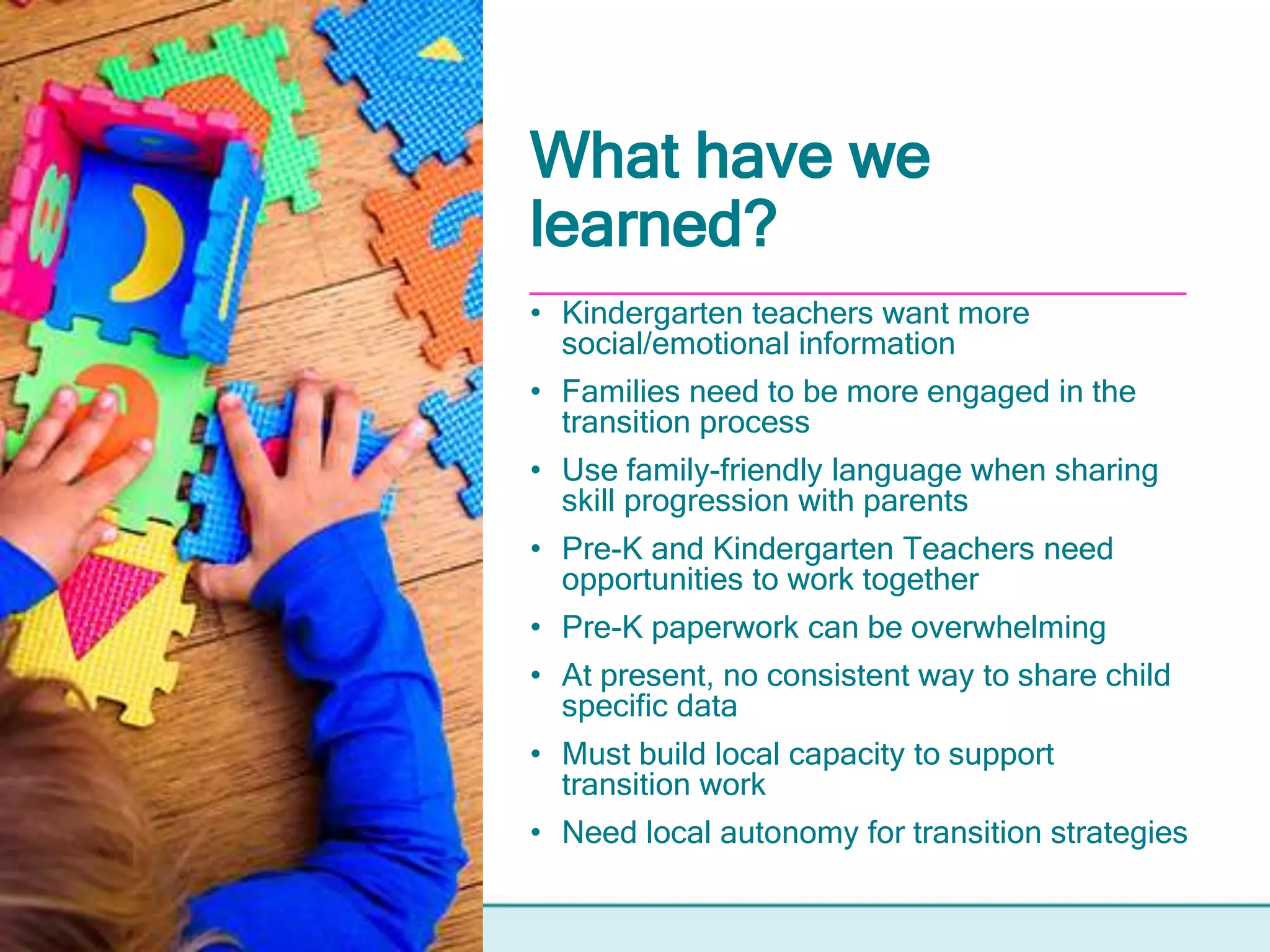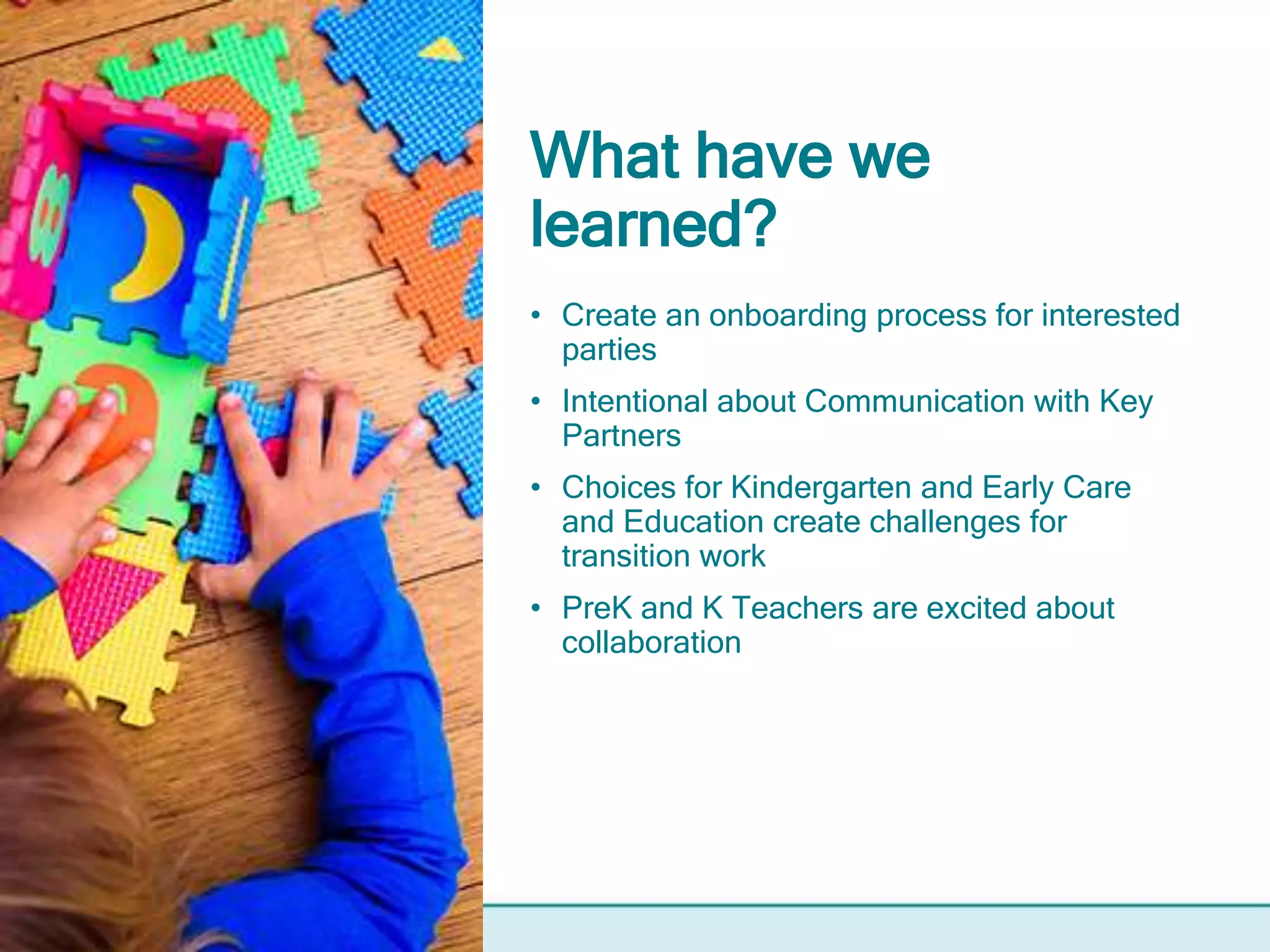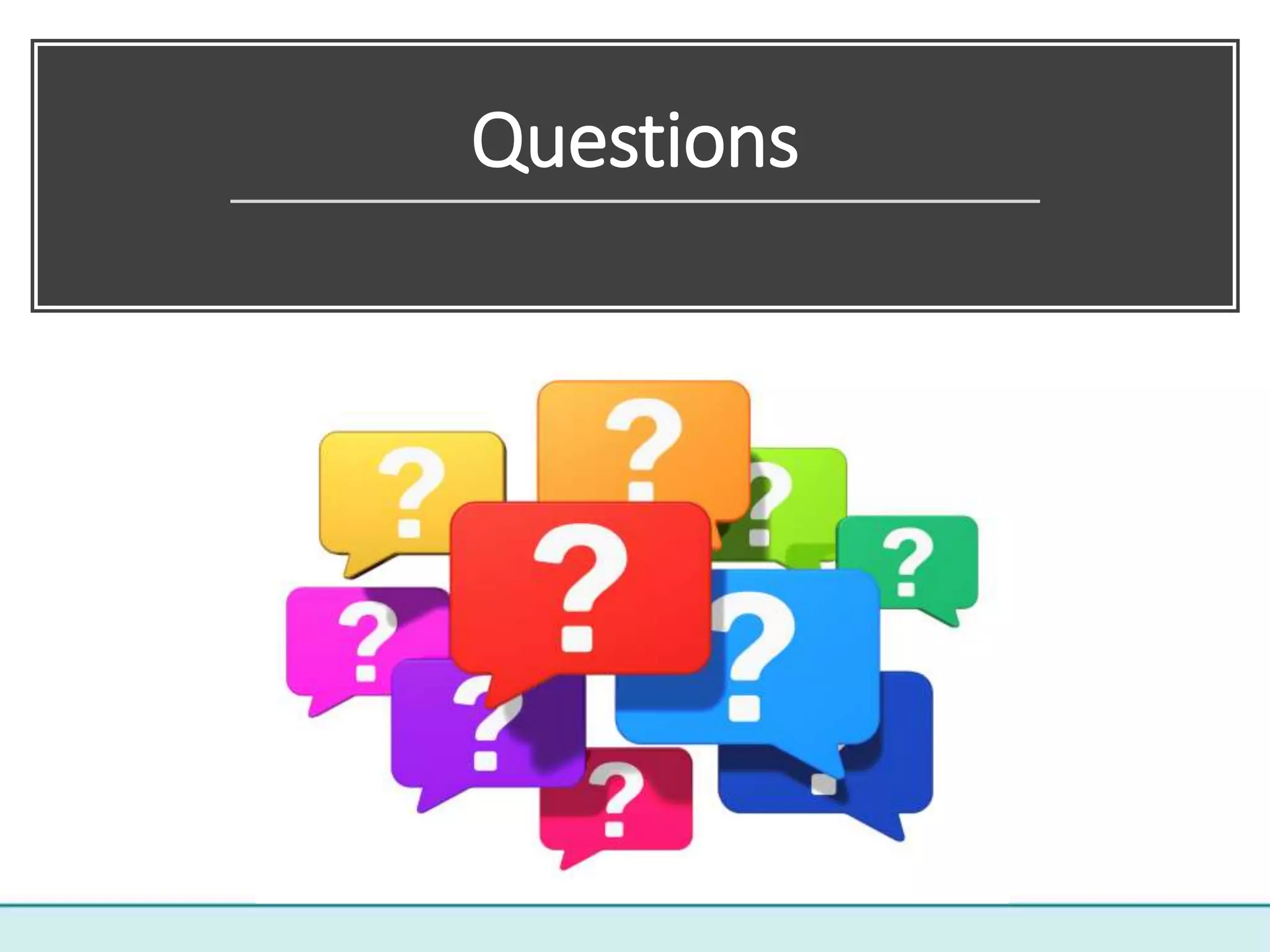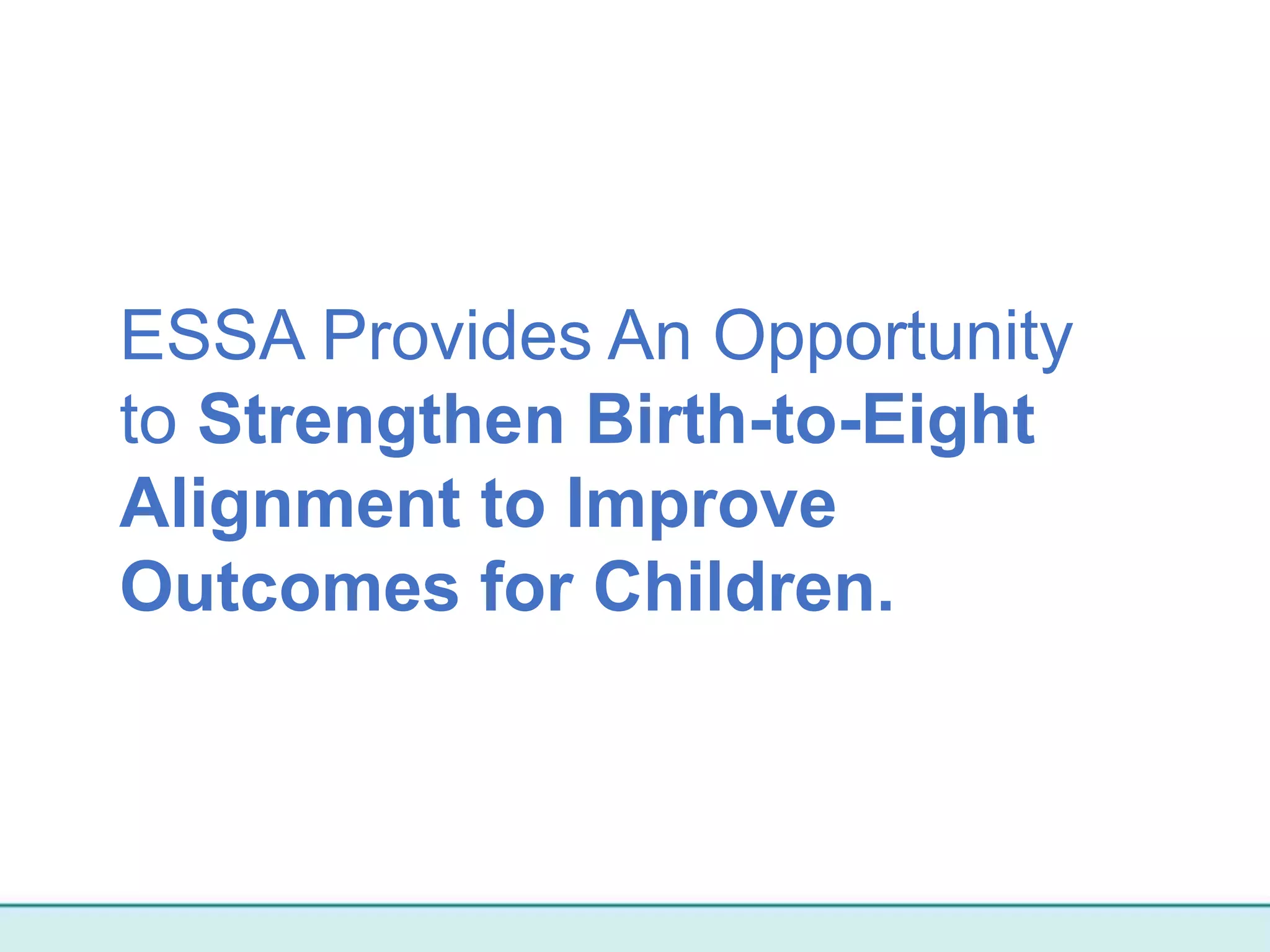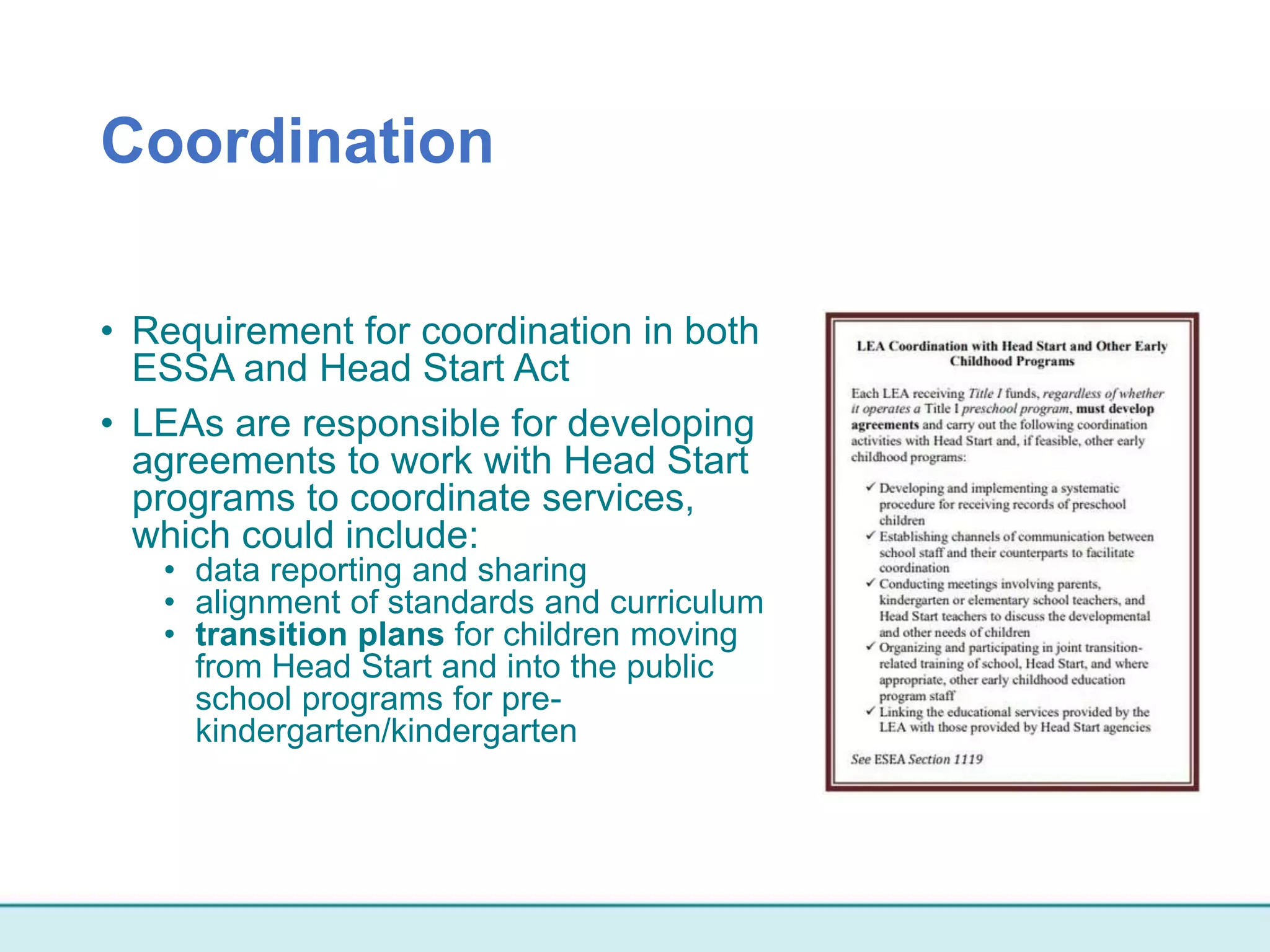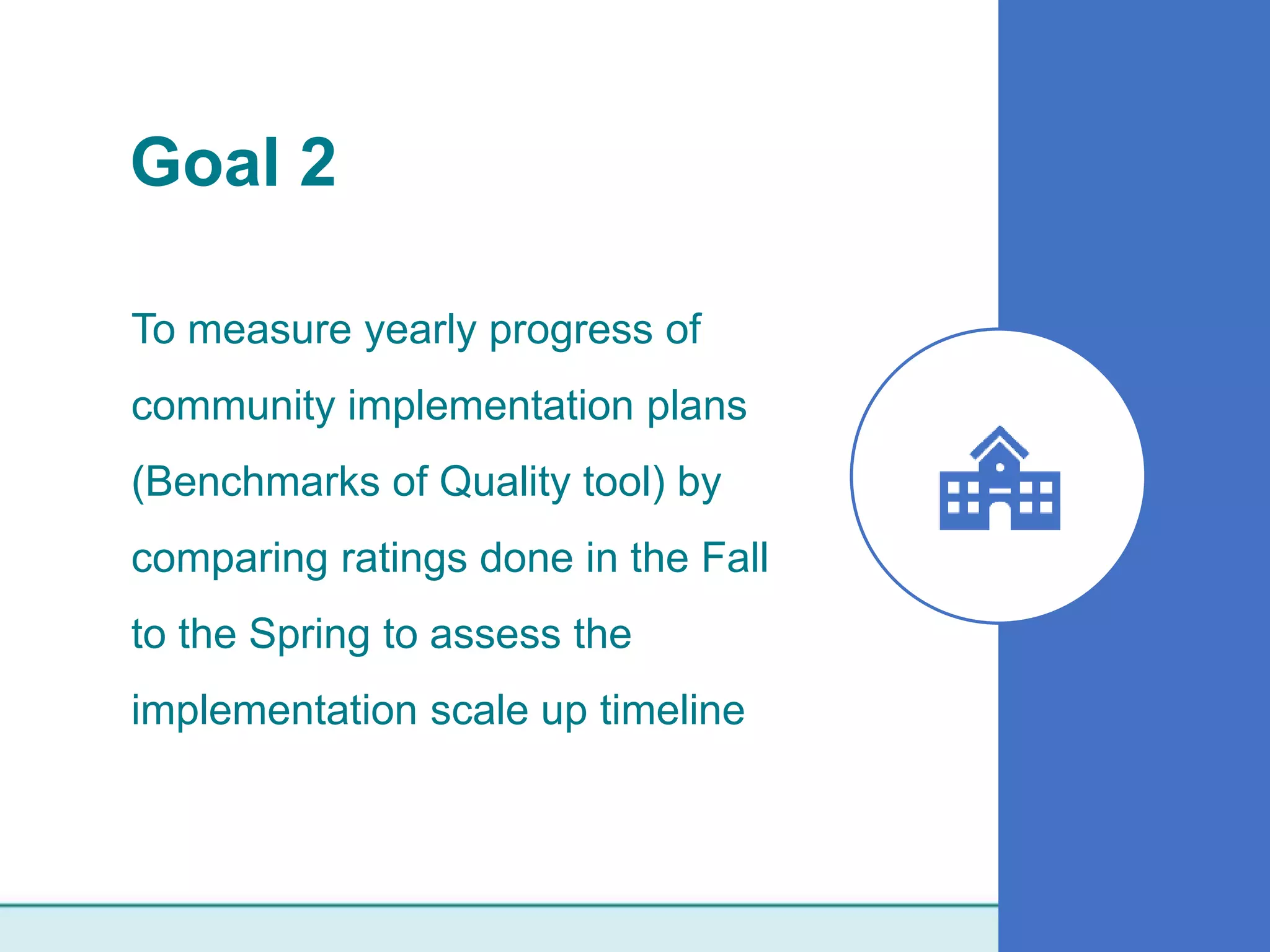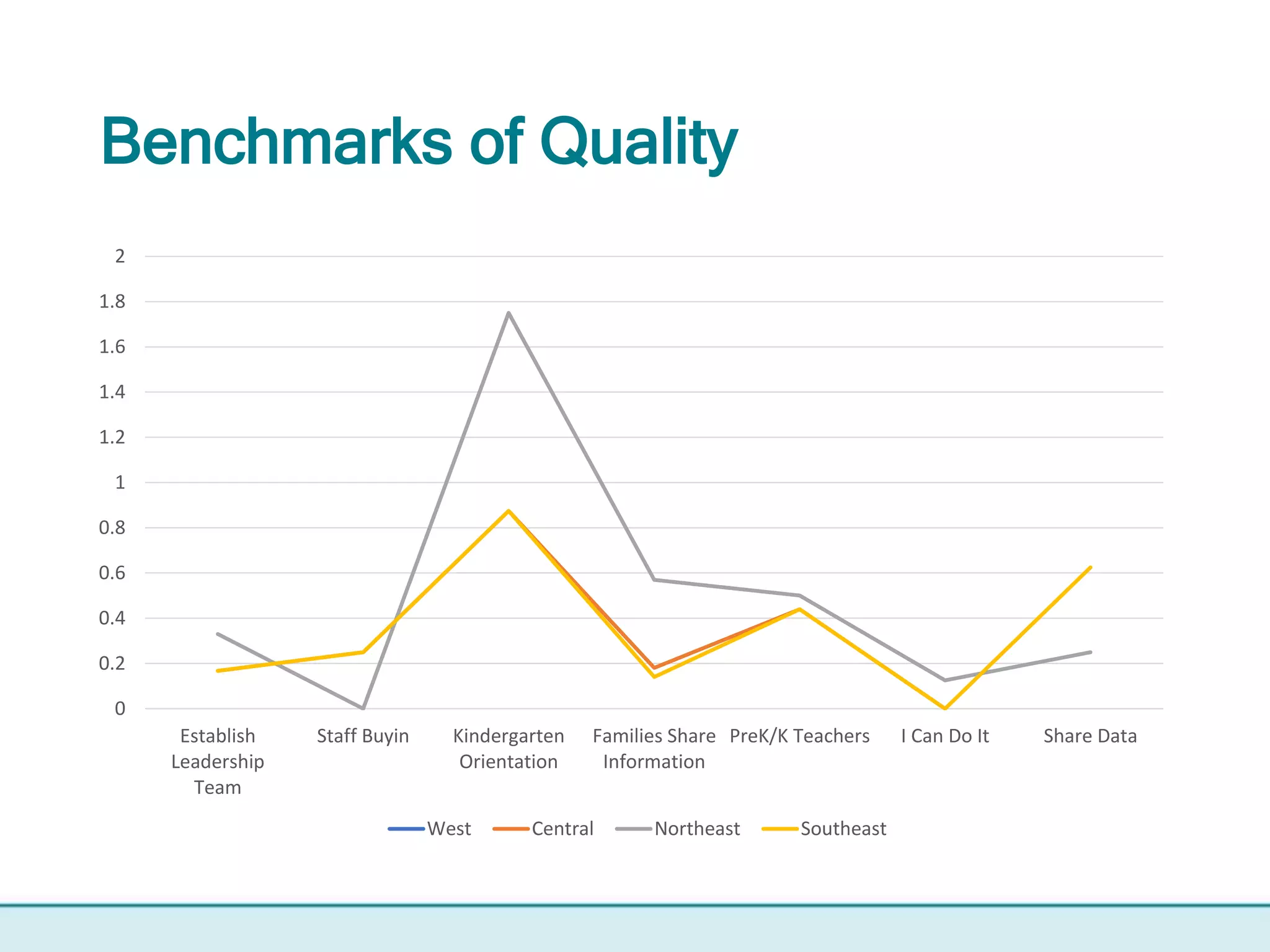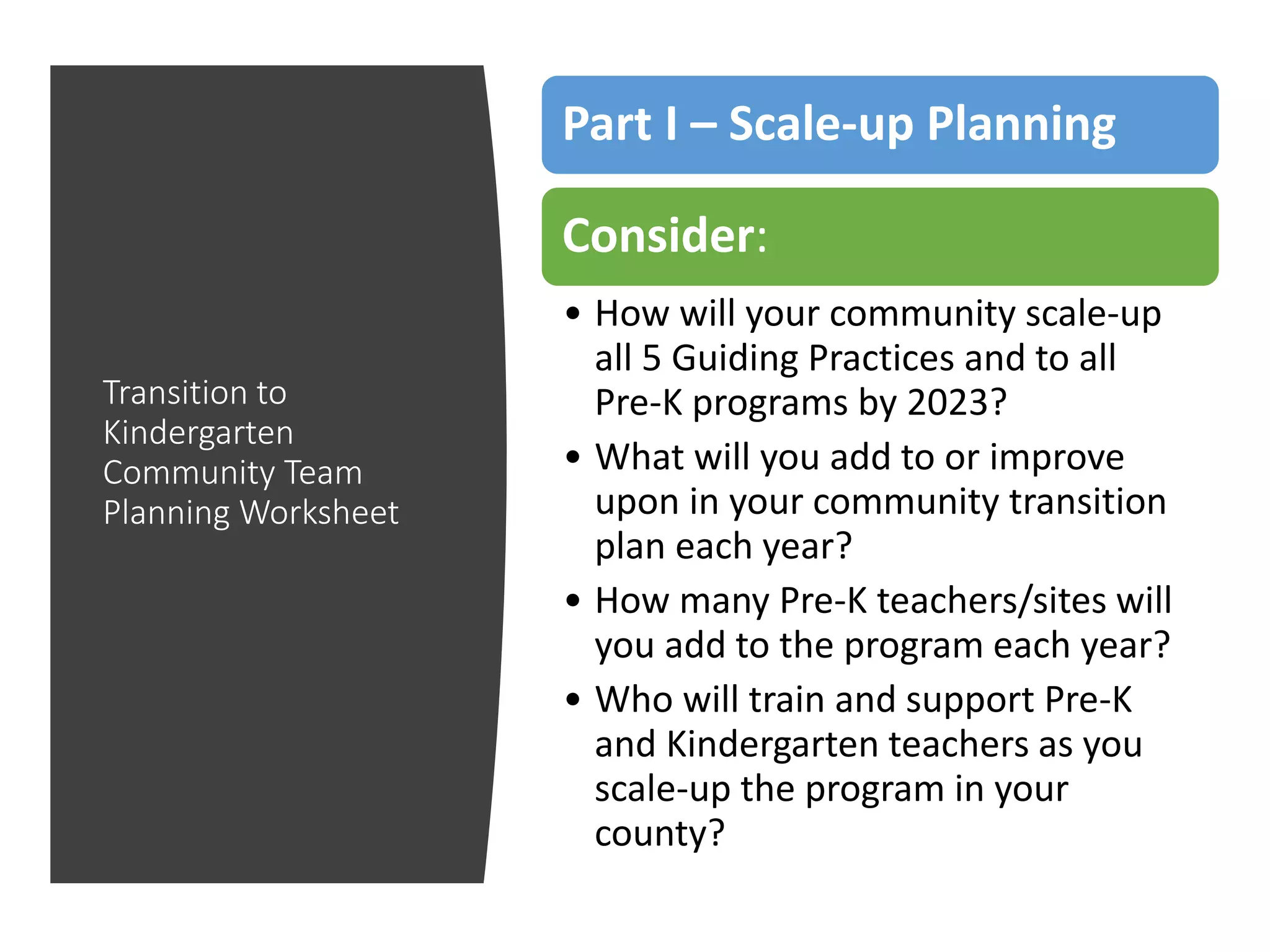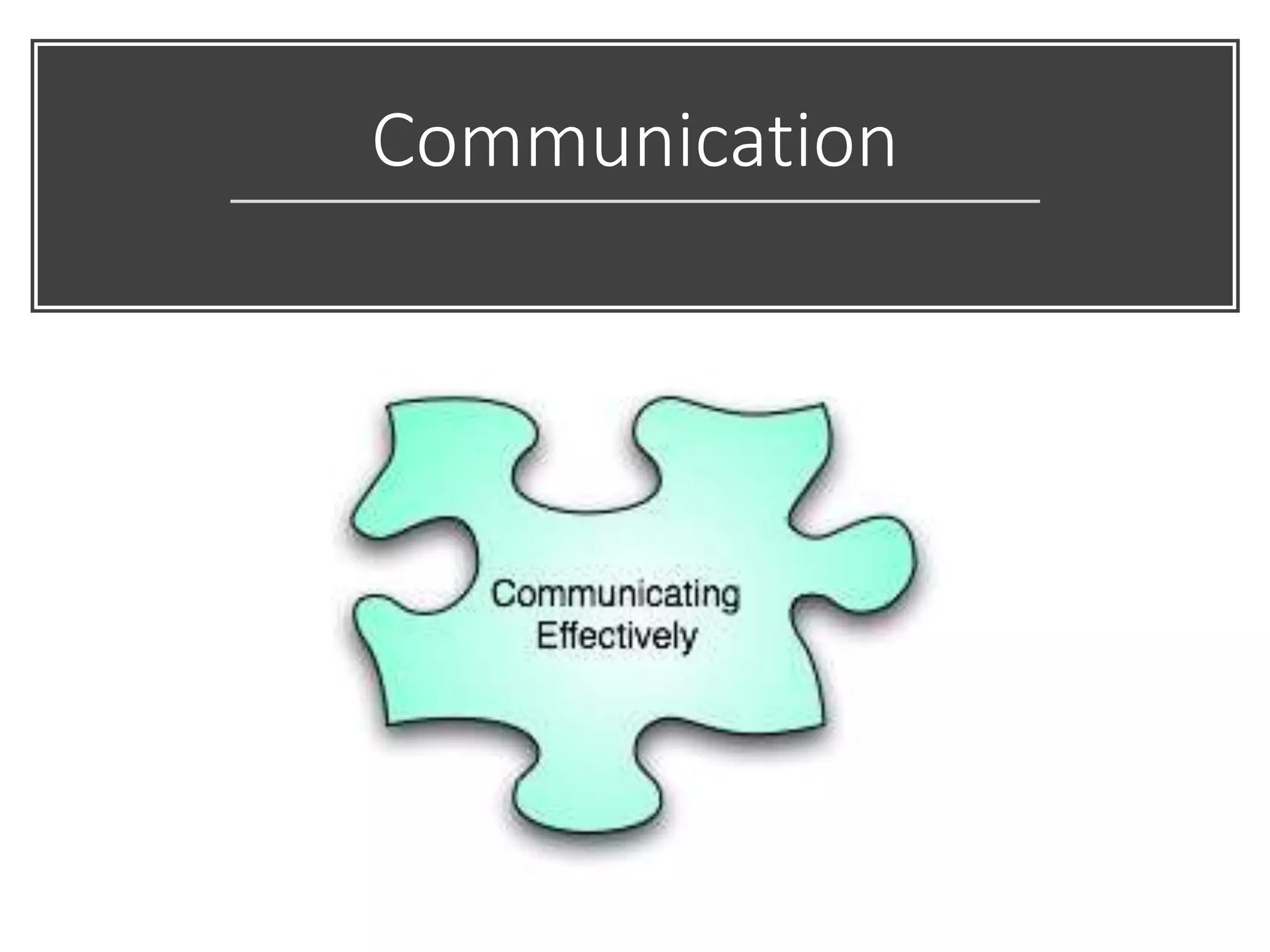This document outlines plans for a multi-phase pilot program to improve transitions from preschool to kindergarten in North Carolina. Phase I involved piloting transition processes in 4 counties. Phase II expanded the pilot to 16 additional counties. Phase III shifts the focus to the entire pre-K year and provides more coaching. The document discusses lessons learned, next steps, alignment with state initiatives, and planning for scaling up the pilot program statewide by 2025.




